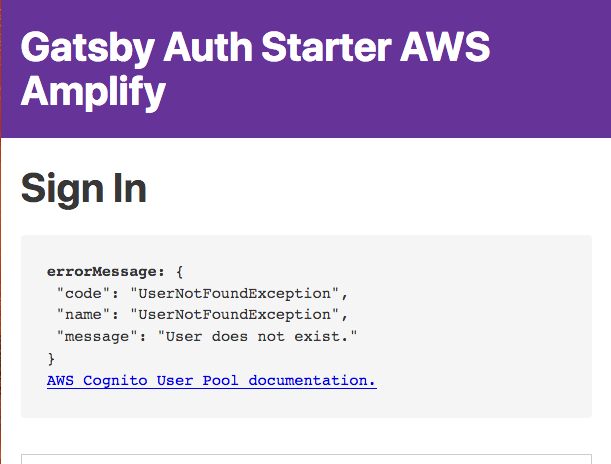Bindings are super important, folks. I don't think there is enough emphasis on them. There are not that many resources online about it and it took me a while to get my head around them. I can't say I have grokd it yet but what I am about to show you works. Lets try to write a few that we need to use in indexPage.re.
We already have aws-amplify as a dependency in our project so we need to create what is called a binding with bucklescript to get it to work in our reason code. To keep with the structure of the original js project, lets a create a file call Amplify.re in the /utils directory.
In Amplify.re, we first need to get access to the aws-amplify library via bucklescript and give it a name that we can call in reason with the bucklescript external key word.
https://gist.github.com/1f7771be0da47e1b36eb0a369036c5bf
Here we have created what is called an opaque type called amp that we will use to to type our aws-amplify function. We use "default" to say we want to use whatever is being exported as default from that installed npm dependency. In this case the default export in the @aws-amplify/auth/lib package is in your node_modules at this path node_modules/@aws-amplify/auth/lib/index.js. Whether you know it or not, this is what you have been using when you import a module via npm when you run npm install. I don't remember how I found the location but the general idea is to find out where your javascript function that you want to bind to exists. That file is is actually not in the git hub repo which doesn't have a tag for the version of aws-amplify that we are using so I can't even point you to it but I did not want to update the dependency for fear of breaking the rest of the project. This is the Auth javascript in the current version of the library.
Ok, so, we then need to get access to our aws-exports.js file that was created for us when we ran amplify init and amplify push. This is how we do it:
https://gist.github.com/bd564c6a7edc566fc7c18e8db8b215a6
The aws-exports.js file exports awsmobile by default in the last line with reads:
https://gist.github.com/79d854f5b2b577c0cf046e9a310eabfe
So above we now have a function called awsConfig that we can call that will get us our values from aws-exports.js and let us connect to our AWS service.
The amplify library has a method called configure that we want to be able to call. To get access to it, we can set up a binding to call configure on our amplify binding. Because we created amplify as a type that just identifies the library, we can use [@bs.send] from bucklescript's bs.send to call a method on amplify. This is what it looks like:
https://gist.github.com/9e448c775bfc27ed2286470ac40c64b3
Here we define configure to take a type amp and a type config then return a type configure which calls configure on amplify. I don't even know if I said that correctly. Basically, when we call configure we have to be sure to pass it the amplify library, typed as amp and aws-exports typed as config, which will then take the variable and call configure. Important to not that you don't have to do it this way. But since I know I am going to be reusing the amplify library, setting it up like this lets me access it by calling its type. You might understand this better after seeing what we do later in this post.
Finally we recreate our Amplify.configure() function from JS by creating a function called configure (could have chosen something less confusing I guess but it doesnt matter), then set it value to the result of calling our external configure function passing it the required amplify and awsConfig parameters.
https://gist.github.com/22765cf0269e2abb312a1f83bf3e76ae
If you are familiar with Amplify.configure() in AWS, this is that. We have just recreated it in ReasonML.
This is what the whole thing looks like:
https://gist.github.com/6569c6a939ccb2996c98191e1bf53341
We then go into our indexPage.re and call configure from our Amplify.re module at the top somewhere so that the entire project has access to the our Aws Amplify service.
Add this to indexPage.re.
https://gist.github.com/652df8352781312083bc3ed4ff502484
Run gatsby develop and open the terminal in the browser. you should see the output from Js.log showing us that we got access to Aws. You might think that it just exporting the variables but if you look closely, you will see some json keys in there that didn't come from aws-exports.js but rather from Aws Amplify's response.
Still dont believe its working? Try signing in with some random credentials. Remember that I haven't created a user yet. Even if you have, just sign in with some random credentials by clicking on the SignIn link to go to the SignUp page and enter whatever. I entered someguy as the username and somePWD{0} as the password. This is what showed on the screen:
This is what is in the image above. I don't yet know how to make what's in the image accessible.
https://gist.github.com/063c42ff8f3e3c0b641050bfe54e8274
Think about what is going on here. We haven't converted the SignUp.js page. The Amplify.configure is being used from our ReasonML file in the rest of the projects javascript files which we linked to in our indexPage.re page. This, my friends, is what they call INTEROP!
Show me the code. See tag creating-amplify-bindings in the repo.
The next thing to do is duplicate the Layout.js component which was imported into the original index.js and I have no idea how we are going to do that...

